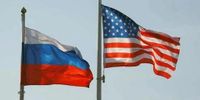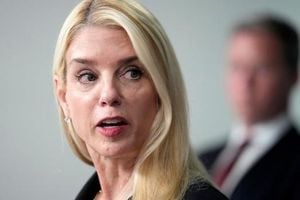As the world watched the high-stakes meeting between U.S. President Donald Trump and Russian President Vladimir Putin in Alaska on August 15, 2025, the ripples of their summit extended far beyond the Arctic Circle. In New Delhi, the mood was one of both celebration and anxiety. India marked its 79th Independence Day with grandeur, but beneath the festivities lay a sense of uncertainty about its place in a rapidly shifting global order.
This uncertainty is hardly surprising. According to Al Jazeera, the relationship between the United States and India, once described by former President Barack Obama as a partnership between “best partners,” has hit its roughest patch in decades. The immediate cause? President Trump’s imposition of a whopping 50 percent tariff on Indian imports—one of the highest levied on any country. Half of this penalty, as reported, is a direct response to India’s continued purchases of Russian oil during the ongoing war in Ukraine. Ironically, this is the very same move that the Biden administration had previously encouraged to help stabilize global crude prices.
The situation grows even more complex when one considers China’s position. Despite being a larger purchaser of Russian oil than India, Beijing has, for now, been spared such harsh U.S. tariffs. Washington is in the midst of negotiating a trade deal with New Delhi, leaving many to wonder if Trump’s approach signals a broader shift away from the U.S. “pivot to Asia” policy that began under Obama in 2011. That strategy had aimed to deepen diplomatic, economic, and military ties in the Asia Pacific to balance China’s growing influence. But, as Milan Vaishnav of the Carnegie Endowment for International Peace told Al Jazeera, “The tariff moves have triggered the most serious rupture in the US-India relations in decades.”
For years, India’s governments have sought closer ties with Washington, seeing the U.S. as a key partner in security, trade, and technology. Trump, for his part, made the relationship personal, forging a public friendship with Indian Prime Minister Narendra Modi. The two leaders appeared together at rallies, exchanged bear hugs, and described each other as friends. Yet, personal rapport proved no match for hard-nosed policy. When Trump slapped India with tariffs rivaling those on Brazil, New Delhi initially tried to keep the peace. That patience has since worn thin, with Indian officials now openly accusing the U.S. of hypocrisy—especially as America continues its own trade with Russia and had previously encouraged India’s oil purchases from Moscow.
“One thing is clear: Trust in the United States has eroded sharply in recent days, casting a long shadow over the bilateral relationship,” Vaishnav remarked to Al Jazeera. Praveen Donthi of the International Crisis Group added that the current crisis is “a result of a clash of personalities between President Trump and Prime Minister Modi.” The tension isn’t entirely new. India has previously faced the threat of U.S. sanctions for its close ties with Russia, notably when it bought S-400 missile defense systems from Moscow. In 2022, Biden’s administration granted a waiver, but Trump’s transactional style has upended such predictability.
America’s history of close ties with Pakistan—long a sore point for Indian strategists—has come back into focus, especially after Pakistan’s army chief recently visited the White House for a rare meeting with President Trump. This, analysts say, only deepens India’s suspicion of U.S. motives. Yet, for a quarter-century, shared concerns about China have bound Washington and New Delhi together. Donthi explained, “A certain bipartisan consensus existed in the US regarding India because of its long-term strategic importance, especially in balancing China.” That consensus, he suggested, is now in doubt.
Meanwhile, India is not standing still. In August, National Security Adviser Ajit Doval traveled to Moscow for talks with Putin, and Foreign Minister S Jaishankar is set to follow. Later this month, Chinese Foreign Minister Wang Yi will visit New Delhi, and at the end of August, Modi will head to China for a Shanghai Cooperation Organisation summit—his first trip to the country in seven years. These diplomatic efforts are part of a broader consideration to revive the Russia-India-China (RIC) trilateral mechanism, which last met in 2019. Russian Foreign Minister Sergey Lavrov has floated the idea, and India has signaled it is open to discussion.
The RIC troika, though, is seen by experts as more symbolic than substantive. Michael Kugelman, a senior fellow at the Asia Pacific Foundation, told Al Jazeera, “Clearly, India is not going to turn on Russia, a very special partner. And India does not turn on its friends.” However, he cautioned that doubling down on strategic independence—or “multi-alignment,” as India calls it—could come at a steep cost if Trump escalates tariffs or sanctions.
Amid these global maneuvers, India’s domestic politics are in play. Prime Minister Modi has faced opposition criticism over his handling of a recent ceasefire with Pakistan after military hostilities in May, following a deadly attack in Kashmir. Trump has claimed credit for brokering the ceasefire—a claim India denies. Vaishnav observed, “Trump’s hardball tactics could bolster Modi’s domestic standing. They highlight Washington’s unreliability, allowing Modi to frame himself as standing firm in the face of US pressure.” Modi himself has vowed not to let Indian farmers’ interests suffer in any trade deal, stating, “even though I know I will have to pay a personal cost.” Nearly half of India’s population depends on agriculture, making the sector highly sensitive in trade negotiations.
On the world stage, India’s clout is undeniable. On Independence Day, both the U.S. and Russia issued statements praising New Delhi’s growing influence. U.S. Secretary of State Marco Rubio called the relationship “consequential and far-reaching,” noting, “Our nations share a vision for a more peaceful and secure Indo-Pacific. This partnership spans industries, fuels innovation, drives critical technologies, and extends into space.” Despite trade frictions, Rubio reaffirmed Washington’s commitment to deepening ties with India to meet global challenges.
Russian President Vladimir Putin, addressing President Droupadi Murmu and Prime Minister Modi, described India as a nation with “well-deserved authority” in world affairs. He underscored Moscow’s intent to further strengthen the “special privileged strategic partnership” with India and expressed confidence that bilateral cooperation would continue to expand, benefiting both nations and contributing to regional and global stability.
These strong messages from Washington and Moscow reflect India’s pivotal position in a multipolar world. As The New Indian Express noted, India’s influence now extends across strategic, technological, and economic domains. But as the world’s largest democracy weighs its options amid U.S. tariffs, Russian overtures, and Chinese competition, the choices facing Modi’s government are anything but easy.
For now, analysts agree that while the warmth of U.S.-India ties may have cooled, neither side is likely to walk away entirely. As Donthi put it, “Both India and the US would benefit if they strike a compromise that allows them to stop the slide in ties. But the warmth and friendliness won’t be present, and this will be evident for some time.”
India’s balancing act on the global stage—between old friends, new rivals, and shifting alliances—has rarely been more delicate or more consequential.




